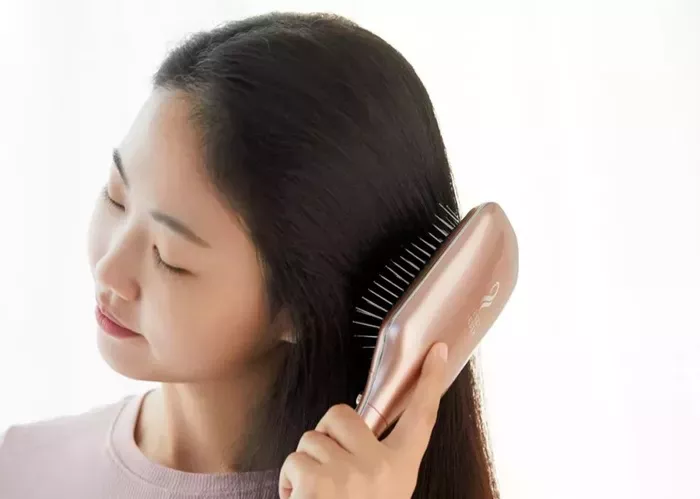After hair transplantation surgery, the newly transplanted hair follicles are extremely fragile. The first two weeks after the operation are the initial healing stage, and the transplanted area needs to be taken extra care of – at this time, the hair follicles are establishing blood supply and taking root, and any external force pulling may cause the transplantation to fail. It is strictly forbidden to touch the scalp with a comb. Even a slight friction may cause the hair follicles to fall out, affecting the final effect. It is recommended to gently rinse the scalp with warm water, avoid rubbing or scratching, and pay attention to the sleeping position to prevent accidental collisions.
3 to 6 weeks after the operation: Hair can be combed during the transition period, but it should be done gently.
During the 3-6 week transition period after the operation, the scalp begins to recover, the scabs fall off naturally, and the roots of the hair follicles gradually become stable. At this point, although it is not necessary to strictly avoid combing as in the early stage, caution is still needed: choose a wide-toothed comb and gently comb from the tips to the roots to avoid directly pulling the hair follicles. The core of this stage is “gentle combing and slow trimming” to reduce the stimulation to the healing hair follicles.
6 to 12 weeks after the operation: Gradually resume normal hair combing. Choosing the right comb is the key
Six to twelve weeks after the operation, the hair follicles are basically mature and the scalp healing is complete. You can gradually resume your daily hair-combing habit. However, it should be noted that hair is still in the growth and development stage. It is recommended to use a high-quality comb with anti-static and round teeth to reduce friction damage. When combing your hair, do it slowly to ensure that the natural oils are evenly distributed to the ends. At the same time, avoid over-combing to prevent the hair follicles from being overburdened.
When can I comb my hair? Two key factors that vary from person to person
Everyone’s body repair ability is different: young and healthy patients usually heal faster, while older people or those with underlying diseases need a longer time. In addition, a balanced diet (rich in nutrients needed for hair growth) and a low-stress state can accelerate recovery, while the opposite may delay healing.
FUE (Follicular Unit Extraction) : It causes less trauma and has a faster recovery. After the operation, you can try combing your hair earlier.
FUT (Follicular Unit Transplantation) : A scalp strip needs to be cut, and the healing period is longer. More care should be taken when combing hair to avoid touching the suture scar.
Summary: Only scientific care combined with patient waiting can achieve the desired effect
Whether and when to comb hair after hair transplantation depends on a comprehensive consideration of the healing stage, the type of surgery and the individual’s physical condition. During the process from “no comb” to “normal comb”, choosing the right comb (such as wide-toothed combs or round-tipped combs) and avoiding violent operation are the keys. Only by following the doctor’s instructions and patiently getting through the recovery period can new hair grow healthily and eventually have a thick and natural hairstyle.
Related Topics
- Mim Opens Bioplastic Surgery Clinic In Dhaka
- Tori Spelling Admits She Looks “Completely Different“
- Meghan Trainor Hints At Plastic Surgery In New Lyrics


